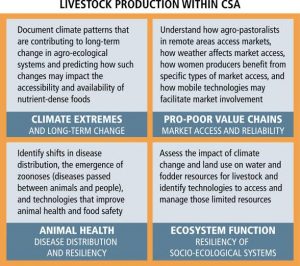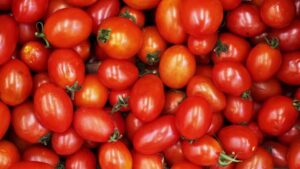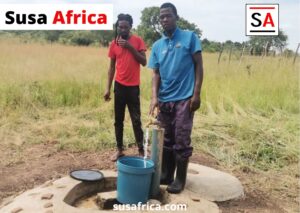Livestock is domesticated animals raised in an agricultural setting to provide labour and commodities such as meat, eggs, milk, fur, leather, and wool. The cattle farm is believed to enhance farmers’ total income and to improve their living conditions. As a means of manure for soil enrichment and as a source of biofuel, the animal waste which is produced can be used. For a substantial population, it is a source of employment.
A previous adjustment in the demand for livestock products have been largely driven by human population growth, income growth and urbanization and the production response in different livestock systems has been associated with science and technology as well as increases in animal numbers.
Nevertheless, production will increasingly be affected by competition for natural resources, particularly land and water, competition between food and feed and by the need to operate in a carbon-constrained economy in future. There is significant doubt as to how these determinants will play out in various regions of the world in the approaching decades.
The livestock species play very important economic and socio-cultural roles for the wellbeing of rural households, such as food supply, source of income, asset saving, source of employment, soil fertility, livelihoods, transport, agricultural traction, agricultural diversification and sustainable agricultural production. Also, it is contributing indirectly to food security by increasing crop output through providing manure, and serve as a buffer to mitigate the impact of fluctuations in crop production on the availability of food for human consumption, thereby stabilizing food supply.
In addition to the aggregate economic effects of cash receipts from marketings, the cattle industry generates a large economic impact through its forward and backward linkages in the economy. The backward linkages include purchased inputs, supplies, and services used by cattle producers. The forward linkages include further value-added economic activities occurring beyond the farmgate such as meat preparation and processing.
The livestock industry internationally is extremely dynamic. In developing countries, it is shifting in response to rapidly increasing demand for livestock products. In developed countries, demand for livestock products is stagnating, while many production systems are increasing their efficiency and environmental sustainability. Livestock are important assets in Africa, helping improve the nutritional status of their owners, and contributing to economic growth.
The Public Expenditure Review (PER) with a Focus on Agriculture, a joint report by the Government in Zimbabwe and the World Bank, reveals an increase in spending and investments in the agriculture sector to 5.7% of the country’s gross domestic product (GDP) in 2017, up from around 1.1% between 2011 and 2015. However, the report notes that despite the increase in spending, productivity has not improved in recent years, owing to a myriad of issues such as weakened tenure security that undermined access to credit, dilapidated infrastructure, and increased vulnerability to drought. Also, the external environment continues to deteriorate, and there is a reluctance by the private sector to finance agriculture, leaving no buffers to increase production and guarantee food security.
Increasing Zimbabwe’s Livestock Production with Climate Innovations
Though Zimbabwe livestock production index fluctuated substantially in recent years, it tended to increase through 1967 – 2016 period ending at 106.3 index in 2016. Moreover, feed shortage, water scarcity, disease and low productivity of animals were assessed to be the major livestock production constraints. The livestock production system in Zimbabwe needs to evolve. Productivity is very low and the situation has gotten worst over the recent years.
Over the years, Zimbabwean communal farmers resorted to marketing their cattle informally and basing prices on how their animals looked at time of sale. Inadequate technical skills and knowledge of the value of their animals, farm investment, and good animal husbandry practices further limited their ability to fully commercialize and earn a decent living.
Most times, farmers face poor prices for cattle after disease outbreak and market changes. Any improvement in these constraints may lead to a sustainable increase in cattle production. Upon the collapse of state veterinary services in recent years, and the poor quality of dipping chemicals, there has been a rise in tick diseases across the country. This has meant that those with resources purchase spray dip chemicals for private spraying. Some also recorded buying veterinary medicines for sick animals.
A quarter to a third of households, those with larger, more valuable herds and flocks invest in this way, and have learned to cope without state services. The rest remains vulnerable and deaths from a variety of tick-borne diseases are regularly recorded, particularly in wetter years. Despite the face of catastrophic natural disasters, farmers will show resilience due to modern farming practices and technical assistance.

There are enhanced techniques, practices and innovations that can be co-generated by farmers, leveraged for their use and adopted which will exhibit a better and more sustainable livestock-based production systems. Such innovations will address bottlenecks around profitability and investment diversification. Specialist believes that climate-relevant, productive and sustainable transformation of agriculture and food systems in low and middle-income countries, to put more science into development considering that the solutions to achieve the Sustainable Development Goals are context-specific.
Expert review indicates that adoption rates of climate-smart agricultural practices remain low in many of the countries which stand to benefit the most. These include Malawi, Zambia and Zimbabwe, where the adoption of complete conservation agriculture systems is presently at 2.5%. Embracing climate-smart innovations for livestock production will mitigate economic and weather-related risks through integrated livestock and crop systems. The interventions should be hinged on the three pillars of Climate smart agriculture (CSA), namely sustainable productivity, adaptation and mitigation to climate change. This is needed to be aided by the following CSA frameworks in Zimbabwe:
- Enhanced agricultural knowledge and innovation system
- Sustainable livelihoods through diversified livestock systems
- Water harvesting for resilient crop and livestock production
- Women and youth focused value chain development and
- Resilient commercial dairy farming.
 For accurate animal disease detection, surveillance, and control systems, the climate-smart innovations for livestock production will investigate the spreading and the rate of predominance diseases (such as those spread by tsetse and ticks) and prepare a model on the effect of climate change on disease carriers and disease distribution.
For accurate animal disease detection, surveillance, and control systems, the climate-smart innovations for livestock production will investigate the spreading and the rate of predominance diseases (such as those spread by tsetse and ticks) and prepare a model on the effect of climate change on disease carriers and disease distribution.
Improvement of cattle production can be a sustainable way to improve the livelihoods of the rural population in Zimbabwe. Farmers should apply conservation agriculture practices, minimizing disruption to soil structure, composition and biodiversity and practised rotations of cereals and legumes reported improved household food security. While embracing healthier and more sustainable production of food will increase the break-even of the livestock value chains for the benefit of the farmers.
Spotting existing and new opportunities for organizing small and medium enterprises (SMEs), provide business training such as creating a budget that includes marketing activities, identifying lucrative markets within their reach, organizing themselves into groups, and negotiating with buyers for better prices, assess the market, support the revamping of markets, business coaching and mentoring, and monitor the adoption rates of innovations. Farmers need to understand vital animal husbandry practices too, such as cattle pen fattening; animal health, nutrition, and breeding; cattle and meat grading; and strategic selling and connecting farmers directly with abattoirs (slaughterhouses).
Consequently, execution of a participatory epidemiology approach by combining the existing conventional control methods and the indigenous knowledge systems. Rolling out an integrated tick- and tick-borne disease control strategy and develop cost-efficient vector control and disease prevention systems will improve livestock production.






























Be First to Comment